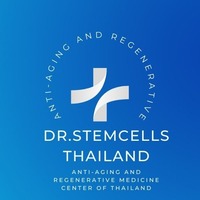Hypertrophic Scars (HPTS)

Hypertrophic Scars (HPTS)
Hypertrophic scars (HPTS) are raised, thickened areas of skin that develop as a result of an overproduction of collagen during the wound healing process. They typically occur after an injury, surgery, or burns and are characterized by their red or purple color, firmness, and elevated texture compared to the surrounding skin. Unlike keloid scars, hypertrophic scars remain confined to the boundaries of the original wound and may improve over time.
Causes
- Wound Healing Response: Hypertrophic scars form when the body produces excess collagen in response to injury or trauma.
- Genetic Factors: Some individuals may be genetically predisposed to developing hypertrophic scars based on their skin type and healing response.
- Location of Injury: Scars that occur on areas of the body with high tension or movement (such as joints) are more likely to become hypertrophic.
- Infection or Complications: Infections or complications during the healing process can increase the likelihood of hypertrophic scar formation.
Symptoms
- Appearance: Raised, thickened skin that is often red, purple, or darker than the surrounding area.
- Texture: Firm and rubbery to the touch.
- Itching or Discomfort: Some individuals may experience itching, tenderness, or discomfort in the affected area.
Diagnosis
Diagnosis is primarily based on a physical examination of the scar and its characteristics. In some cases, a healthcare provider may evaluate the scar’s history and any associated symptoms to rule out other types of scarring.
Treatment Options
Topical Treatments:
- Silicone gel sheets or silicone ointments can help flatten and soften hypertrophic scars over time.
- Corticosteroid creams may reduce inflammation and collagen production.
- Corticosteroid intradermal injections can be administered directly into the scar tissue to reduce its size and improve appearance.
- Laser treatments can help reduce redness and flatten hypertrophic scars by targeting blood vessels and promoting collagen remodeling.
Surgery:
- In severe cases, surgical excision may be performed to remove the scar tissue, although this carries a risk of recurrence.
- This technique involves using fine needles to create micro-injuries in the scar tissue, stimulating collagen production and improving texture.
Cryotherapy:
- Freezing the scar tissue can help reduce its size and improve appearance.
Conclusion
Hypertrophic scars can be a source of cosmetic concern for many individuals. Early intervention and appropriate treatment options can significantly improve their appearance and alleviate associated symptoms. At DrStemCellsThailand‘s Anti-Aging and Regenerative Medicine Center of Thailand, we offer advanced therapies aimed at managing hypertrophic scars effectively. For more information about our treatment options or to schedule a consultation, please visit our website or contact our team directly.
Consult with Our Team of Experts Now!
References
- Hypertrophic Scars: Pathophysiology and Management
This article provides an overview of hypertrophic scars, including their causes, characteristics, and treatment options.
DOI: 10.1016/j.jaad.2016.05.012 - The Role of Silicone Gel in Scar Management
This review discusses the efficacy of silicone gel sheets in treating hypertrophic scars and keloids.
DOI: 10.1016/j.jdiacomp.2020.107646 - Laser Therapy for Scar Treatment
This study evaluates the effectiveness of laser therapy in improving the appearance of hypertrophic scars through various mechanisms of action.
DOI: 10.1016/j.stemcr.2021.05.005















